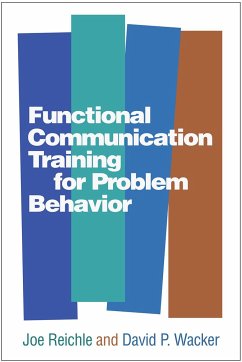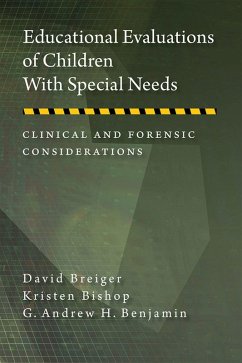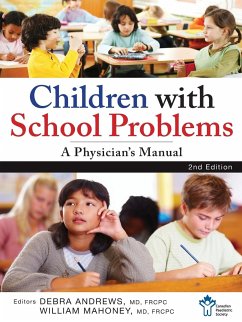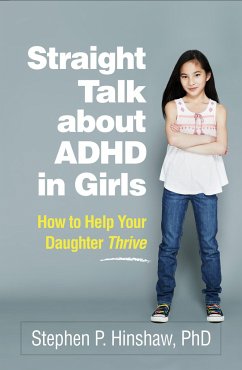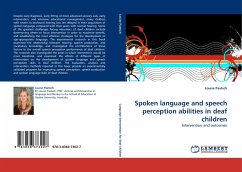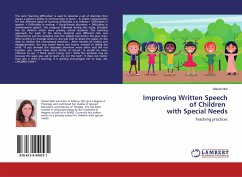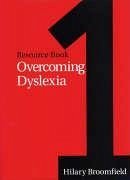
Persisting Speech Difficulties in Children
Children's Speech and Literacy Difficulties

PAYBACK Punkte
39 °P sammeln!
Children with persisting speech difficulties present great challenges for managers, therapists, teachers and psychologists. This third book in the Children's Speech and Literacy Difficulties series is based on research and practice with school-age children with persisting speech and associated difficulties. It focuses on the psycholinguistic nature of their difficulties, how to design intervention programmes and how intervention outcomes might be measured.In order to effectively treat school-age children with longstanding speech difficulties practitioners need to draw on a variety of approache...
Children with persisting speech difficulties present great challenges for managers, therapists, teachers and psychologists. This third book in the Children's Speech and Literacy Difficulties series is based on research and practice with school-age children with persisting speech and associated difficulties. It focuses on the psycholinguistic nature of their difficulties, how to design intervention programmes and how intervention outcomes might be measured.
In order to effectively treat school-age children with longstanding speech difficulties practitioners need to draw on a variety of approaches, e.g. combining a psycholinguistic approach with a linguistic (or more specifically, phonological) approach. Theory and therapy are inseparable and our knowledge of theory needs to be used to drive therapy. In turn, therapy outcomes can inform our theoretical knowledge. In order to build evidence-based programmes, we need to evaluate therapy outcomes using wide-ranging outcomes measures that can evaluate change at a variety of levels. Case studies are a useful way forward in learning more about children with speech difficulties and how to support them.
Persisting Speech Difficulties in Children:
_ serves as a practical handbook, containing useful word lists, tips and sheets for photocopying.
_ provides a means of accessing a wide range of literature. Each chapter summarises recent research findings and closes with a bulleted summary of main points.
_ gives an explanation of the psycholinguistic approach and how to implement it, and integrate it with other approaches.
_ trains readers in research design for evidence-based practice. This includes stimuli design and selection, intervention design and scoring procedures.
_ shares case studies, outlining what was done with specific children. These cases do not necessarily say how intervention should be done but rather aim to give examples of how therapy can be done and used to make comparisons with other approaches.
_ motivates changes to service delivery for children with persisting speech difficulties.
It is a must have reference book for Speech and Language Therapists and Pathologists, researchers and students of Speech and Language.
In order to effectively treat school-age children with longstanding speech difficulties practitioners need to draw on a variety of approaches, e.g. combining a psycholinguistic approach with a linguistic (or more specifically, phonological) approach. Theory and therapy are inseparable and our knowledge of theory needs to be used to drive therapy. In turn, therapy outcomes can inform our theoretical knowledge. In order to build evidence-based programmes, we need to evaluate therapy outcomes using wide-ranging outcomes measures that can evaluate change at a variety of levels. Case studies are a useful way forward in learning more about children with speech difficulties and how to support them.
Persisting Speech Difficulties in Children:
_ serves as a practical handbook, containing useful word lists, tips and sheets for photocopying.
_ provides a means of accessing a wide range of literature. Each chapter summarises recent research findings and closes with a bulleted summary of main points.
_ gives an explanation of the psycholinguistic approach and how to implement it, and integrate it with other approaches.
_ trains readers in research design for evidence-based practice. This includes stimuli design and selection, intervention design and scoring procedures.
_ shares case studies, outlining what was done with specific children. These cases do not necessarily say how intervention should be done but rather aim to give examples of how therapy can be done and used to make comparisons with other approaches.
_ motivates changes to service delivery for children with persisting speech difficulties.
It is a must have reference book for Speech and Language Therapists and Pathologists, researchers and students of Speech and Language.



